► 2024 Range Rover Electric gets closer
► First prototype images undisguised
► Extreme hot and cold powertrain tests
Land Rover is stepping up extreme weather testing of the Range Rover Electric, as it counts down to the 4×4’s autumn 2024 introduction.
These are the first photos of an undisguised prototype, testing in temperatures as low as -40˚C. They confirm that the Range Rover BEV will only discretely advertise its zero emissions credentials, using details such as a faired-in grille and new aerodynamic alloy wheels with EV-branded centre caps. Insiders debated whether to be more extrovert with the EV’s design cues but subtlety won the day.

Electric unlocks pinpoint all-wheel drive control
Insiders have long hinted that switching to electric should enhance Land Rover’s trademark off-road capability. The BEV’s electric motors offer more pinpoint control and faster reaction times, with slip detection and response decentralised from the anti-lock braking module. As a result, torque can be reduced (or increased) at each individual wheel in as little as one millisecond, compared with 100milliseconds when the ABS is calling the shots.
The engineers have been testing the new Electric Drive Units (EDU) and their controlling software in the Arctic Circle. Their calibration work should mean fewer ABS interventions, as wheels losing traction are slowed quicker while wheels with more grip get the right amount of torque at the right time for smooth progress.

The EDUs – including the electric motor, transmission and power electronics – have been developed at JLR’s new £250 million Future Energy Lab in Coventry. They will also be assembled in-house, along with the battery pack.
Test programme giving new life to old batteries
JLR’s development engineers – also testing in the extreme heat of the Middle East – are calling on used plug-in hybrid batteries to charge up the Range Rover BEV where possible.
Start-up Allye Energy has taken seven existing batteries from Range Rover and Sport PHEVs and built a Battery Energy Storage System (BESS) for use in the field. Each BESS can store 270kWh – enough to power the average UK household for nearly a month.
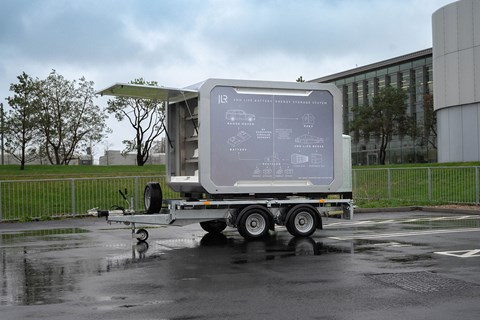
Crucially the 3.5-tonne mobile unit can be used to recharge Range Rover Electric prototypes in extreme locations without a charging infrastructure. This reduces vehicle downtime and saves CO2, by eliminating dependency on diesel generators. Every hour of generator use emits 129kg of CO2, JLR calculates, and the BESS is lined up to facilitate 1000 hours of testing on the electric Rangie.
Range Rover Electric: the specs
In the absence of more confirmed details, we’ve been compiling a dossier on the luxo-EV. Range Rover engineers talk with glee about electrifying their hero model. Spawning a full EV helps with key brand attributes: it’ll be whisper-quiet, for starters, with nary a judder of combustion clatter and an active noise cancellation system has been confirmed to ensure a hushed cabin.
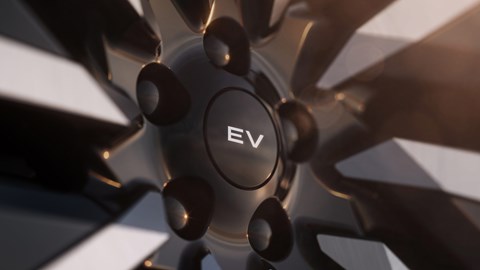
Furthermore, Lode Lane’s off-roading expertise can control precisely traction at each wheel thanks to highly adaptable software governing electric motors. It’s being developed at JLR’s new £250 million Future Energy Lab in Coventry, with prototypes testing everywhere from -40C Arctic chills in Sweden to the +50C heat of Dubai in a bid to quash the ongoing reliability worries that the brand has unfortunately accrued in recent years.
The long-range rover
There’s a clear trend emerging that big batteries have become the ultimate luxury status symbol. German premium saloons were first to break the 100kWh barrier and the battery boom shows no sign of abating. It’s why the Rolls-Royce Spectre has a 102kWh cell.
Expect the electric Range Rover to follow suit, allowing an official range expected to approach 400 miles, making it one of the longest range EVs around. Rangie owners will rarely have to mix with the public charging riff-raff – and when they do, they can look forward to lightning-fast charging times, as the 800-volt architecture is designed for rapid rejuicing.
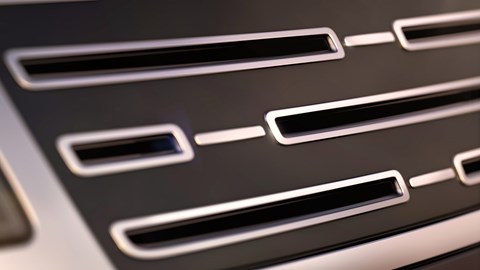
It’s telling that Land Rover’s first electric car is also its priciest; the Range Rover will premiere the brand’s approach to EVs and promises ‘a seamless electric ownership experience – effortless charging, energy partnerships, software-over-the-air updates and intelligent technology to maximise range.’
Luxury and lightweighting: strange bedfellows
Talk of adding bulky batteries, toys aplenty and four-wheel drive hardware, and you’ll probably be wincing at the likely kerbweight of an e-Range Rover. Worry not, claim insiders, who point out that bereft of a large six- or eight-cylinder engine, and the accompanying driveshafts and differentials to guarantee off-roading prowess, the mass of the electrified L460 is closer to the 2.5-tonne combustion car than you might think.
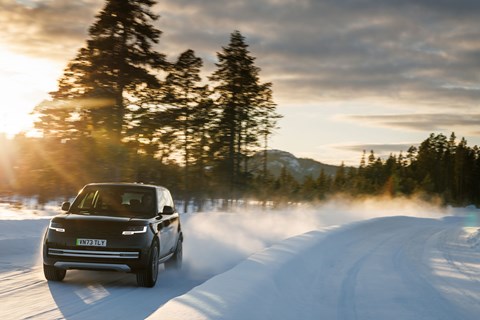
Don’t suppose that they’re going to compromise on the EV’s off-roading prowess, either. Land Rover has confirmed it’ll wade through up to 850mm of deep water and towing capability is assured (though a heavy horse box will surely take a dent out of the electric range).
The new 2024 Range Rover Electric: born electric
The battery-powered Range Rover has been conceived since day one, rather than bolted on as an afterthought. This means the MLA Flex hardware was a clean-sheet design ready for batteries from the outset and the Solihull factory can produce whichever models the market demands, the EV passing down the same line as hybridised combustion versions thanks to a new £70m underbody facility.
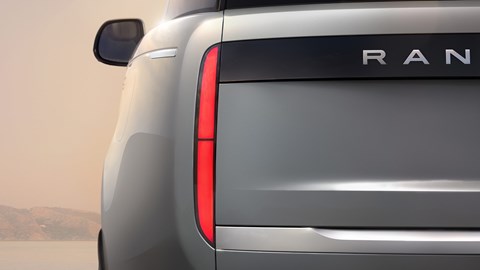
It’s a clever hedge against the pace of EV adoption in different territories around the world. Moreover, the Range Rover Electric is taking batteries and electric drivetrain components assembled at JLR’s new Electric Propulsion Manufacturing Centre in Wolverhampton.
Thomas Müller, JLR’s executive director of product engineering, gets the last word: ‘We are on target to create the quietest and most refined Range Rover ever created. The magic ingredients that underpin the success of Range Rover remain unchanged: timeless, reductionist design, a serene cabin and go-anywhere capability – but now offered with zero tailpipe emissions.’
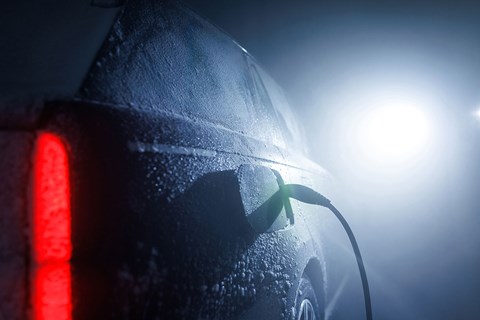
Get it right, and surely success beckons. But the world’s wealthiest car buyers are a discerning bunch. Let’s hope the Range Rover Electric delivers.
All our Land Rover reviews